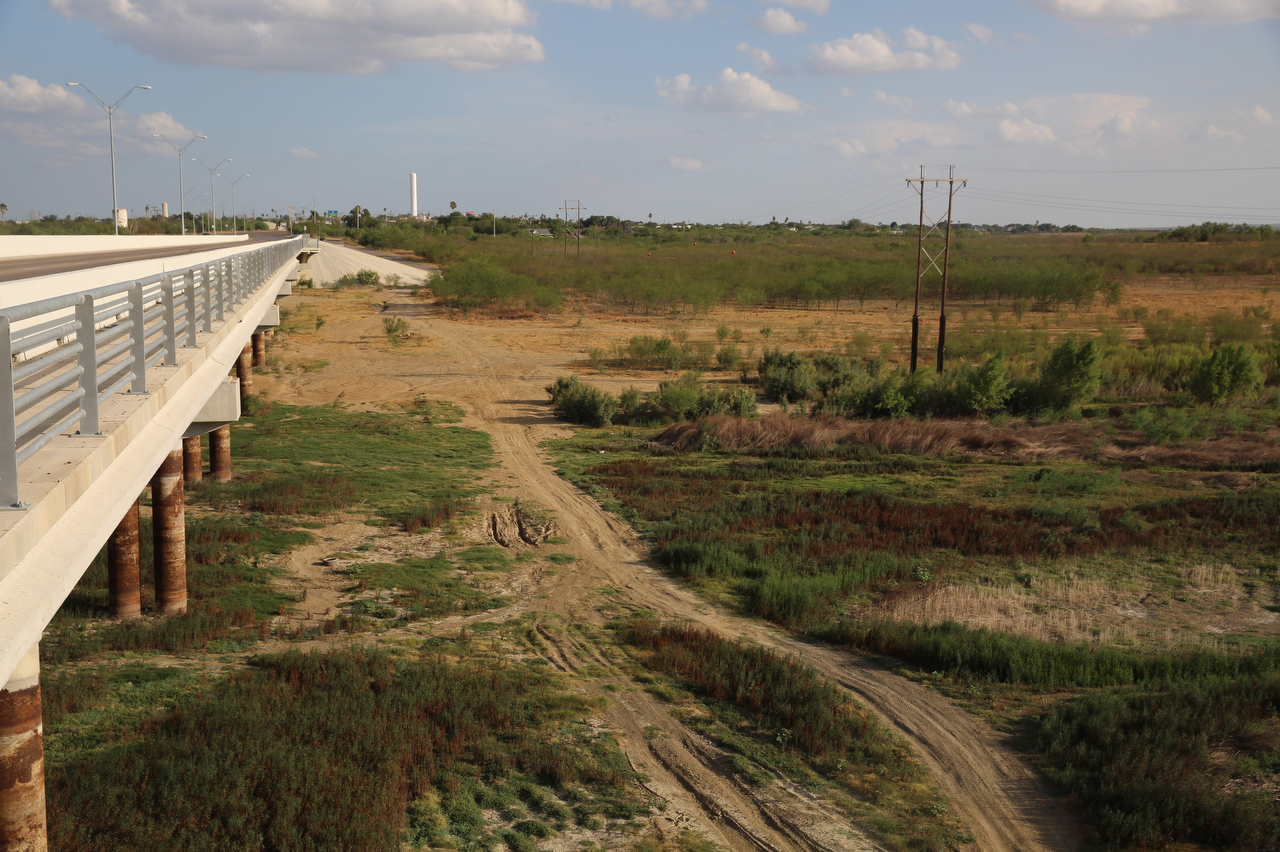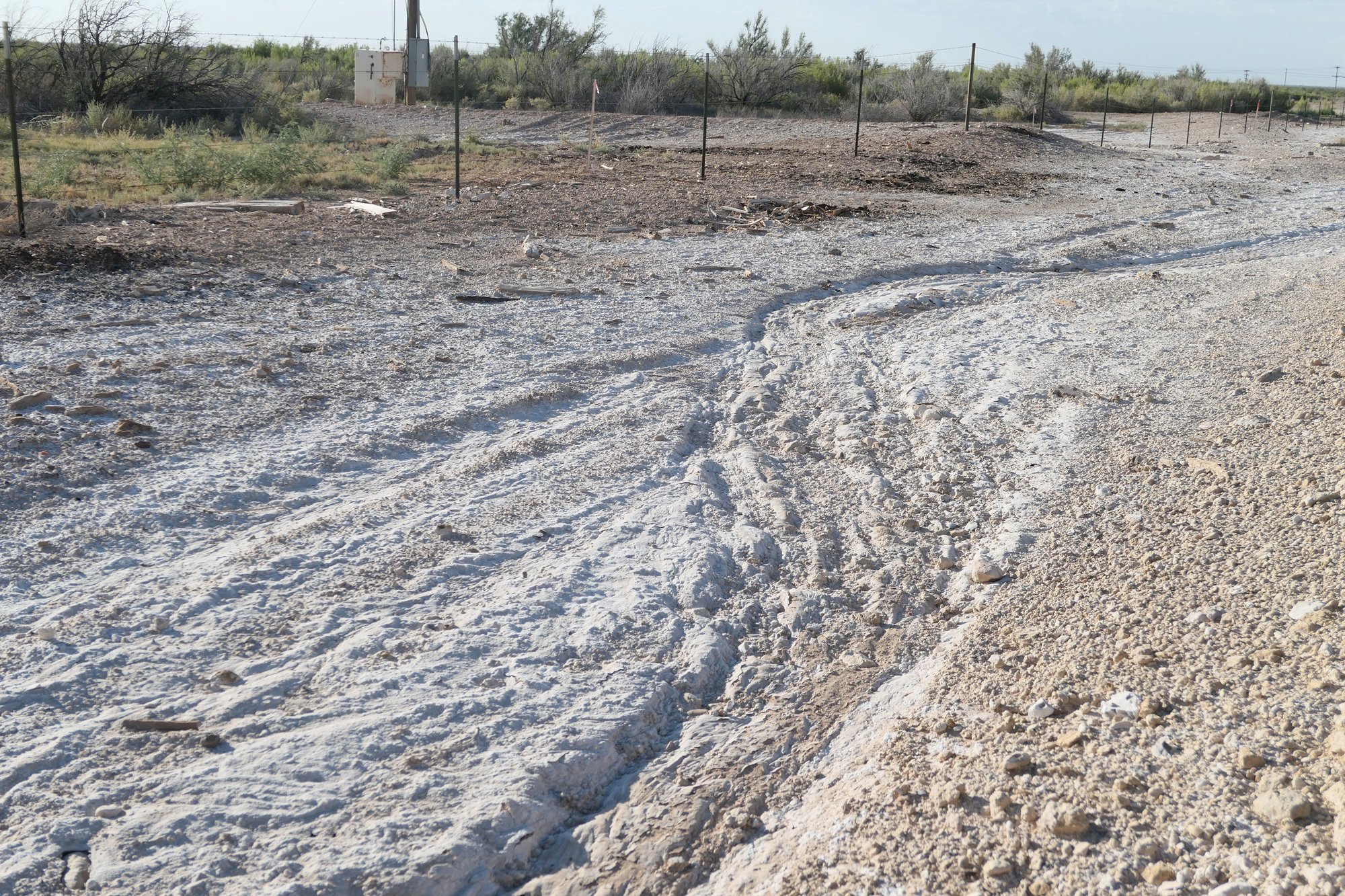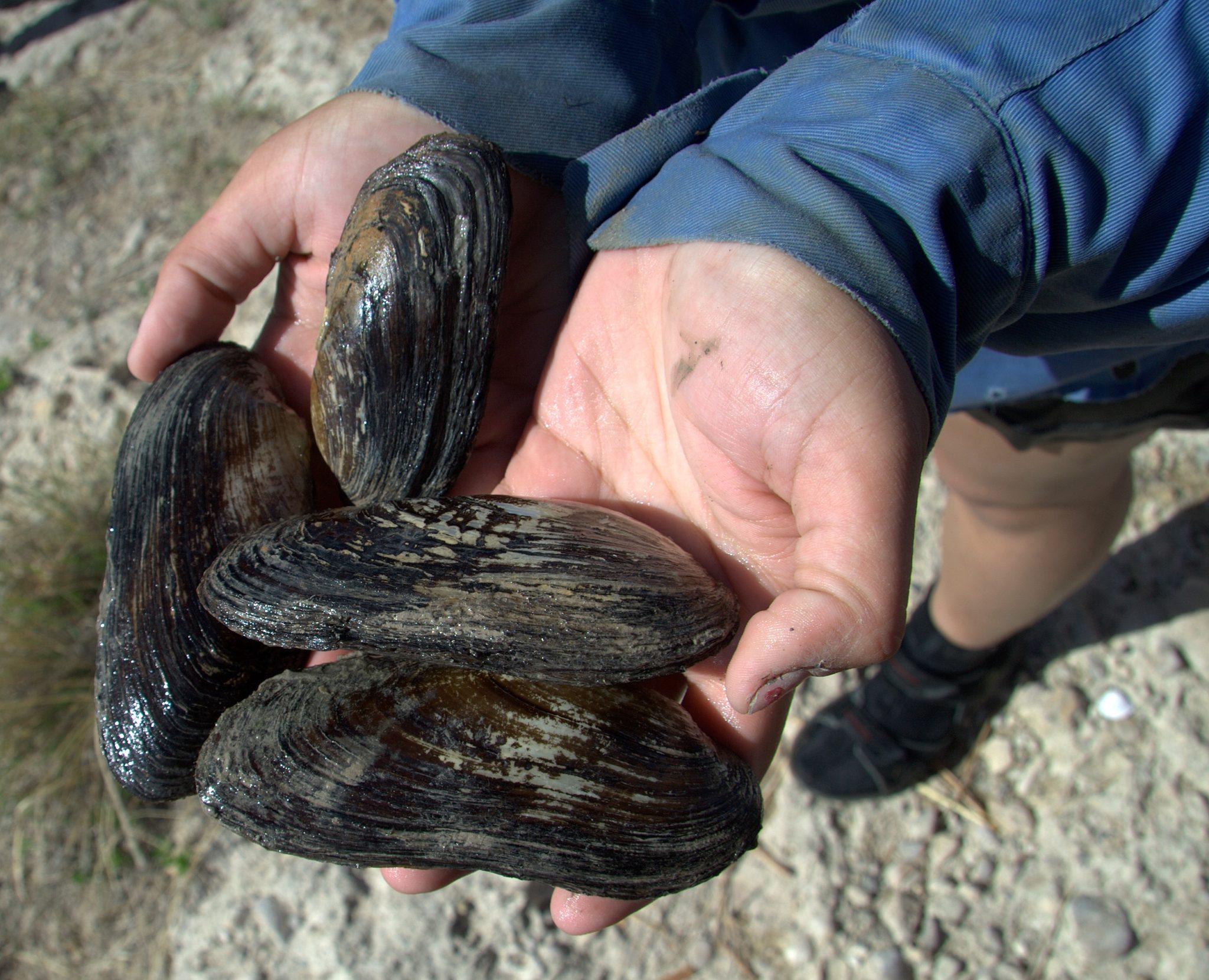
How the Fate of Texas’ Endangered Mussels Could Affect Water Usage Statewide
The designation could have significant consequences for people, farmers and companies along the Rio Grande and holds clues for how listing other rare mussels would change water use in Texas.

Above: Texas hornshell mussel.
The Texas hornshell, a freshwater mussel found in crevices and boulder outcroppings of the Rio Grande, isn’t much to look at. While it can be easily mistaken for a stray rock, the unobtrusive bivalve’s fate may have significant consequences for how water is used across the state. Last month, the U.S. Fish and Wildlife Service (FWS) decided that hornshell populations were dwindling and the creature needed to be placed on the federal endangered species list for protection.
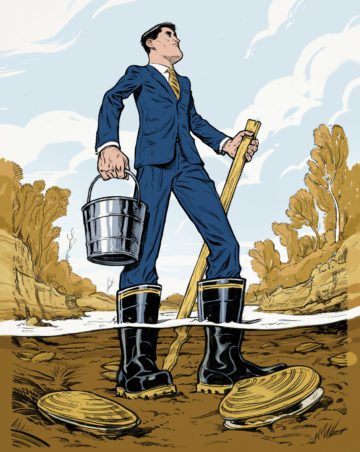
Most Texans likely haven’t heard of the hornshell or the 11 other mussel species that FWS is considering listing as endangered — including the whimsically named Texas fawnsfoot and Texas fatmucket — but the homely creatures have been at the center of political jostling in recent years. Last year, I wrote about allegations that the Texas comptroller’s office was funding research into mussels and rigging the process to favor industry over conservation. Ultimately, the future of the mussels is closely tied to how water from the state’s rivers is divvied up. That places the inconspicuous mussels squarely in the crosshairs of some of the state’s most powerful interests — energy companies, farmers and cities.
The disappearance of some mussels from Texas rivers mostly boils down to two main causes: a decrease in the quantity and quality of water. Texas’ growing population, drought exacerbated by climate change, and irrigation and industrial needs are all placing a strain on the state’s rivers.
The Rio Grande is ground zero for some of those challenges. Over-pumped and struggling with the effects of climate change, the river is one of the world’s most endangered. Farmers and industrial operations along the river already compete heavily for Rio Grande water. But with a newly classified endangered species, regulations that complicate who gets water along the river and how much are looming.
“We’ll move forward with a recovery plan that’ll help identify what will be needed to remove the species from the listing,” said Lesli Gray, a spokesperson for FWS. “It’s very early in the process.”
The FWS, which listed the Texas hornshell amid pushback from regulation-averse oil and gas companies, is now considering which sections of the river to designate as critical habitat and whether a certain minimum flow of water must be established for the mussel to survive. The agency is also in the process of setting up voluntary conservation agreements with landowners and companies operating along the Rio Grande.
Mussels are the canaries in the coal mine — harbingers of what’s to come for the river.
The process that FWS uses to list the mussel, designate critical habitat and decide how to protect it will also likely serve as a playbook for the 11 other rare mussel species that the agency could designate as endangered. FWS is expected to make decisions about four of them in 2018, and it appears ultimately that other mussel species may be listed as endangered. That means similar power struggles could soon play out along other rivers across the state.
“It’s about water quantity, not only for oil and gas, but also for river authorities and for municipalities,” said Timothy Bonner, an aquatic biologist studying mussels at Texas State University. “It all comes back to water quantity. How much do we leave in the system?”
If FWS finds that some species are struggling because there isn’t enough water in the river, the agency could require that a certain amount of water be left in the river for the mussels. That could limit how much industries, cities and farmers can draw from a river during a drought, which may in turn hurt the economy of regions dependent on the rivers. A 2014 study funded by the Texas comptroller’s office found that if water use in the Brazos, Colorado and Guadalupe-San Antonio river basins were restricted to protect mussels, it could result in losses from $37 million to $80 million a year in Bexar, Medina and Tom Green counties.
Dumping of industrial waste, sedimentation and runoff carrying pesticides and other contaminants also worsen water quality. On the Rio Grande, if the agency finds that the mussels are dying as a result, permits that allow municipalities and industries to dump treated waste into the river may become more stringent.
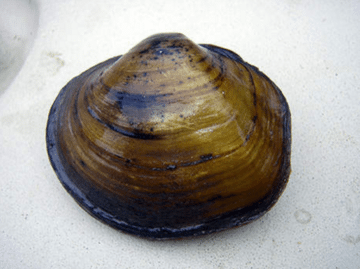
In response to FWS potentially listing species in some of the state’s major river basins, the Texas comptroller’s office circulated a report earlier this month on the abundance of five mussel species, their tolerance to harsh environments and their ability to survive in captivity. Bonner, who led that study, said that while he was “pleasantly surprised” to find more Smooth pimpleback and Texas pimpleback mussels, he didn’t find as many Texas fatmucket, Texas fawnsfoot or false spike mussels as he was expecting.
Charles Randklev, a Texas A&M University researcher who was enlisted by the FWS to study the Texas hornshell on the southern side of the Rio Grande, also studied the presence of two other species in Mexico — the Salina mucket and Mexican fawnsfoot — that FWS is scheduled to make a decision on in 2022. Based on his research, Randklev said the situation was “pretty dire” for those two species as well. “For whatever reason those streams could dewater and the water quality goes south and that would be it for them,” he said.
Randklev said that the relationship between water users and the mussel species need not be antagonistic. Mussels are the canaries in the coal mine, he said — harbingers of what’s to come for the river.
“If we protect these populations, we are providing and protecting water security,” he said.

